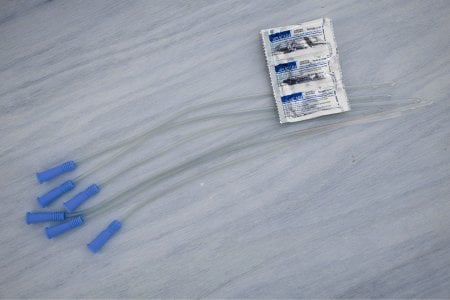Risks of Reusing Catheters

Reusing single-use medical devices (SUDs), including urinary catheters, poses serious risks to health and safety. While some individuals may attempt to clean and reuse these devices to save money or due to limited access, doing so can increase the risk of infections and other complications.
Are Catheters Meant for Single Use?
Yes, most sterile catheters are designed for single use only. According to the U.S. Food and Drug Administration (FDA), a single-use device is intended for use on one patient during a single procedure and is not meant to be cleaned, disinfected, or reused. These catheters are manufactured under strict sterility guidelines and do not include instructions for reprocessing because they are not designed to be safely reused.
Despite these regulations, some people still reuse catheters, particularly in home care settings. However, improper cleaning can leave harmful bacteria behind, leading to a greater risk of infections and complications.
Health Risks of Reusing Catheters
1. Increased Risk of Urinary Tract Infections (UTIs)
Catheters can have small crevices where harmful bacteria and residue can linger even after cleaning. If a catheter is reused, bacteria may enter the urinary tract, potentially leading to painful UTIs, bladder infections, and even kidney infections.
2. Risk of Viral Contamination
A study testing reprocessed catheters found that even after professional-level sterilization, 60% of the catheters still contained viral contamination from enterovirus and adenovirus. This highlights that sterilization methods do not always eliminate all bacteria and viruses from single-use catheters.
3. Structural Damage to the Catheter
Reusing a catheter weakens the material over time. Each cleaning process degrades the integrity of the catheter, making it less flexible, more prone to rough edges, and more likely to break during use. A damaged catheter can cause irritation, pain, and an increased risk of injury to the urethra.
4. Lack of Sterility
Even if a catheter appears clean, it may still contain microscopic bacteria, residue, or soap buildup that could cause irritation or infection. Without the ability to guarantee sterility, reusing a catheter puts your health at serious risk.
Why Do Some People Reuse Catheters?
Some individuals believe that catheters are labeled for single use only for profit reasons, but medical research has repeatedly shown that the risks of reusing catheters outweigh any potential cost savings.
Additionally, some people may reuse catheters due to financial constraints or difficulty accessing supplies. If you are struggling to afford catheters, there may be insurance coverage options or assistance programs that can help you get the catheters you need.
Safe Catheter Use: Always Choose a New, Sterile Catheter
When it comes to medical devices like catheters, your health and safety should always come first. The best way to reduce infection risks and complications is to always use a new, sterile catheter every time.
If you're unsure which catheter is right for you, our team is here to help! We can assist you in finding the best catheter for your needs and help you place your first order.
Call us today at 888‑726‑5066 or fill out the form below to request free catheter samples!
Resources: D.S. Luijt. “Risk of infection by reprocessed and resterilized virus-contaminated catheters; an in-vitro study,” European Heart Journal (March 1, 2001).
Dunn, D. “Reprocessing single-use devices–the ethical dilemma,” The National Center for Biotechnology Information (May 2002).
“Guideline for Disinfection and Sterilization in Healthcare Facilities,” Centers for Disease Control and Prevention (2008).
“Labeling Recommendations for Single-Use Devices Reprocessed by Third Parties and Hospitals,” Food and Drug Administration (July 30, 2001).
Request Free Catheter Samples
Related Articles





